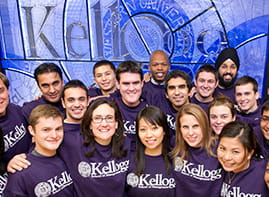Consumer decision-making is dramatically more circuitous than it once was. As part of the Marketing at the Leading Edge series, Kevin McTigue discussed how to make inroads amid the seeming chaos
2/23/2017 -
“Consumer journeys are not new,” said Kevin McTigue, Vice President of Strategy & Consulting Practice at SapientRazorfish and a Lecturer at Kellogg, presenting the
second talk in the
Marketing at the Leading Edge series. He referenced Frank Hutchinson Dukesmith, who in 1904 talked about moving consumers from initial interest to action. But two recent trends have radically altered how this journey is taken.
First, channels of communication beyond traditional media have exploded. “There are always crazy new things coming out and it’s hard to figure out how they plug in, or what to say where,” McTigue said. Second, both products and messaging are becoming commoditized. “In almost every category, you have the same products talked about in the same way,” he said. “If there’s no difference, then consumers default to price. That’s not what you want.”
Given these changes, McTigue offered three steps to navigating and creating value along the modern, digital consumer journey.
Map It
Understand how consumers experience the journey
Before making a purchase, today’s consumers travel labyrinthine paths. Given the many avenues available to learn about, compare, and shop for products, consumers tend to start and stop, advance and retreat, before making a decision. “When you think about your last purchase, it was probably incredibly complicated,” McTigue said.
Marketers nonetheless need to map these journeys as best they can. Though he compared the purchase journey to “passing through a forest with no defined route,” McTigue said that if you look closely enough you eventually discern well-worn paths that mark the most common journeys. (Of note, different journeys often correlate with distinct market segments.)
Throughout this process, he highlighted the need to keep two central concerns in mind. First, “we need to analyze the journey not as we wish consumers would go through, but as they actually go through,” he said—a simple premise that is routinely ignored. Second, marketers need to understand not simply the path, but consumer thoughts, feelings and motivations along that path. For instance, people often start shopping for a select CPG category once they have children—on a child’s first birthday, more specifically (and interestingly). “Knowing that birthdays are an important trigger offers a way to build brand affinity through emotional association,” he said.
Macro assessments like ‘this consumer wants a new car’ are no longer sufficient. Companies should breakdown consumer behavior at each touchpoint. What does the consumer want when she first decides to get a new car? What triggered it? What is she thinking? Where is she looking for information? Building on the example of car shopping, a dissection of the process might reveal that consumers tend to start out with two cars in mind, then balloon their consideration to eight, and eventually narrow back down to two. “That’s useful to know,” he said.
As an added benefit, mapping consumer journeys tends to unite disparate insights from across an organization.
Once the journey is mapped, companies must then prioritize points of intervention.
Prioritize
Focus resources carefully
The most common mistake McTigue sees is a lack of focus. “I’ve too often seen companies put a little bit of money into a lot of things, and nothing makes a difference.” To avoid a diffuse approach, he suggests a few basic steps.
First, companies should home in on the most important consumer target; don’t spread thin across many demographics or segments. Second, once the most common consumer journeys are understood—the most well-worn forest paths—companies should resolve the specific “sub-needs” at the waypoints in the journey that create the most value for the consumer and the company. Based on the mapping, a brief naturally surfaces to solve these challenges – “Our specific business goal, our target, our most relevant message, and our most opportune channels.”
McTigue made clear that while sophisticated analytical tools can take these journeys to the next level with deep insights and predictive modeling, they are not necessary to get started. He cited examples of teams modeling rough journeys very effectively in a three-hour work session using pen and paper.
Run a Pilot
ROI is earned knowledge
A question that McTigue often hears is ‘what will be the return on investment?’ He built on this point: “You can’t know that until you run a test,” he said. “You can have informed hypotheses based on benchmarks, but you need to start running pilots to determine the numbers.” This should initially be done on a small scale. It should also be done with clear internal goals and key performance indicators (KPIs) to monitor whether something succeeds.
McTigue also noted as an aside that the value of journey maps tends to be correlated with organizational buy-in. If nobody else believes in the process, then it’s not going to work. “You need to get other folks on-board. Start with something simple, prove value, and move on to more complex analyses.”
The dialogue, the second in a series hosted by Kellogg’s Marketing Department, will continue on May 1st with a presentation by Neal Roese and Tim Calkins on “Brand Storytelling: Lessons from SC Johnson’s Kiwi brand.”






